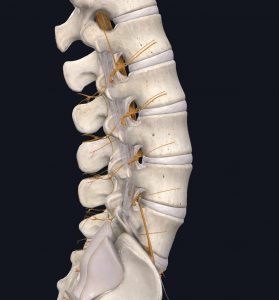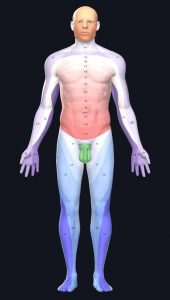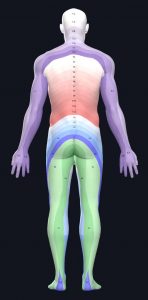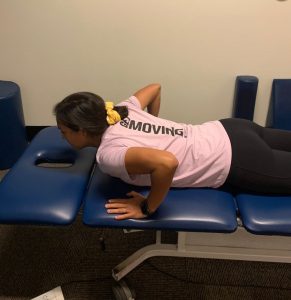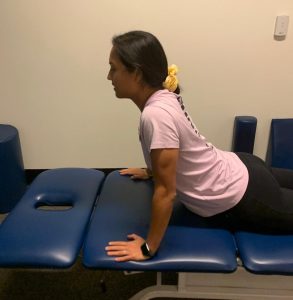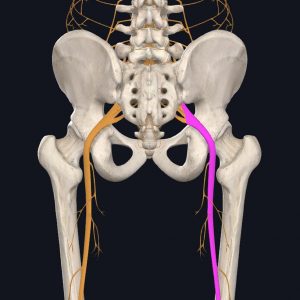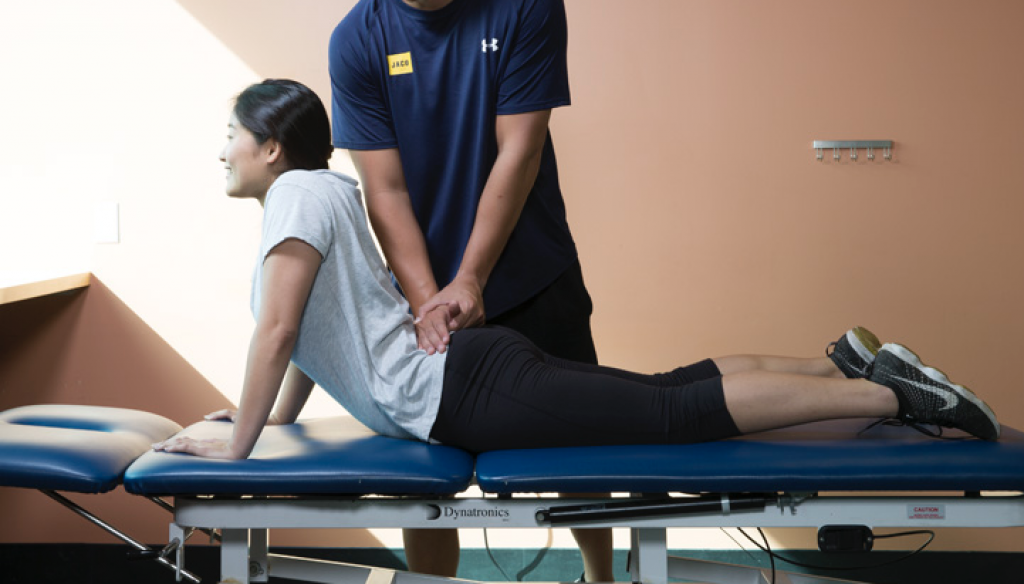
Peripheralization and centralization are terms used to describe a pattern of symptoms that are associated with low back pain with radicular symptoms into the hip, leg, and foot.
Peripheralization refers to symptoms of pain or numbness/tingling traveling away from the origin of pain. Centralization essentially refers to symptoms returning toward the origin of pain or resolving completely.
We commonly use these terms to describe the pattern of pain that may originate in the cervical, thoracic or lumbar regions that then develops pain, numbness or tingling to upper or lower limbs. Back pain and neck pain with radiating symptoms to our hands or feet can become especially debilitating to our daily function.
Often, it may feel like nothing can help manage or change the symptoms. However, physical therapy is a great resource to help address symptoms of back/neck pain that travel down your leg or arm.
If you’re near us in Oahu, Hawaii… reach out to JACO Rehab to see a physical therapist today!
Where Do the Symptoms Come From?
Back or neck pain can present with a variety of symptoms depending on each person. For now, we will focus on the type of pain that can originate in your spine and then radiate to your arms or legs.
Let’s look at a classic example of how injury to the low back can cause pain, numbness, and tingling down the legs and the feet.
Disc Herniations: A Classic Example
Between each vertebrae sits a vertebral disc that acts as cushion in our spine. With an injury such as lifting a heavy object, intense coughing, or degeneration, the disc can be compressed causing a disc herniation.
When that disc is compressed, it can cause it to encroach on the nerves. This can trigger symptoms of pain, numbness, and tingling down the leg. If the compression remains constant on the nerve, then you can also experience weakness.
- In yellow: nerves of lumbar spine
Image Courtesy of Complete Anatomy
The location of your symptoms depends on which nerve is affected. Each vertebral level correlates with a nerve pathway. Understanding where your symptoms are located can help you figure out which level of the vertebrae is affected.
Here’s a map of the body’s dermatomes, which are areas that you may feel pain, numbness, or tingling and their corresponding vertebral level/nerve root.
- Front View
- Back View
Images Courtesy of Complete Anatomy
Compression of the disc can worsen with spinal flexion movements (sitting and bending over). Usually, this can be reduced with positional changes, specifically with spinal extension movements (walking, standing, laying on stomach).
This is where the terms peripheralization and centralization are used to describe the pattern of symptoms. If the symptoms are spreading into the limb, then they are peripheralizing. If the symptoms are improving in the limb and you feel them moving closer to its origination (the back/neck), then they are centralizing.
Centralization is the Goal
There is a fine line between peripheralizing vs. centralizing symptoms.
It is our goal of physical therapy to centralize the symptoms, meaning to resolve the symptoms in the leg and localize it toward the spine.
Physical therapists are keen on recognizing the right movement patterns for your unique case to assure proper management of care. Centralization is the goal, so we want to recognize movements that can help chase those symptoms back to where they originated.
How to Centralize Using McKenzie Protocol
Let’s take a look at one tool we use to help decrease compression of the disc, the McKenzie Protocol.
McKenzie is commonly used as a type of treatment to facilitate centralization of symptoms with the patient’s direction of preference. The direction of preference refers to the position the patient experiences reduced pain or centralized symptoms.
For example, if your symptoms are worsened with bending forward or flexion movements, then physical therapy will focus on using repetitive extension movements. The repetitive movement will decrease compression in the spinal segment’s disc, which centralizes the symptoms.
It is important to note that these movements are passive. Below is a demonstration of how you can do repetitive lumbar extension while keeping the extensors inactive. You can also click HERE to see a live demo.
- Start
- End
If you are unsure what to do for your specific symptoms, make sure you book an appointment to see a physical therapist.
Is “Sciatica” the Same Thing? Does Physical Therapy Help?
The term “sciatica” is often used as an umbrella term referring to any type of pain going from the back to the legs.
However, sciatica is actually more specific to the sciatic nerve. It is a type of radiculopathy that can also be controlled by centralizing symptoms.
The sciatic nerve can be compressed from the lumbar segments or it can be compressed at any point along the nerve causing irritation or inflammation. It originates from the lower back, specifically L4-S1 nerve roots. Those nerve roots join together to form the sciatic nerve, which runs under the piriformis muscle (a muscle deep to the glute). The nerve is one continuous piece that continues down the leg and then separates into other branches of nerves that run down to the foot.
- Sciatic Nerves (right nerve in pink)
Image Courtesy of Complete Anatomy
Various branches of the nerve running from the glute to the foot can be affected, which present as numbness/tingling or weakness. Physical therapists can identify the pattern of those symptoms along the leg to address the specific level of origin in the spine.
When asked about your symptoms, give a detailed answer about its location because it can help your physical therapist track down the problem.
Here’s what your physical therapist will do during your examination for sciatica or any radicular symptoms you may be experiencing:
Identify the origin of pain
Find the direction of preference
Treat with movement in direction of preference to attain pain centralization
Educate to maintain centralization with functional movement
When Should I Try Physical Therapy?
Have you been experiencing some back or neck pain with symptoms (pain, tingling) traveling down into your arm or leg?
Step one, check in with your doctor to rule out other possible medical problems, and if appropriate then make it over with your referral to physical therapy!
Physical therapy can offer education and tools to address your symptoms to improve your function. At JACO Rehab, we are trained to be able to sort out reasons you may be having pain/symptoms and then be able to develop an individualized plan to manage them.
We would love to be able to “fix” all physical impairments with that magic wand, but unfortunately, we don’t have that special power. However, we are experts on the musculoskeletal system and movement, which together we hope to give you more tools to have pain-free movement!
Don’t wait for symptoms to become unbearable! Be proactive and get help. Book an appointment at JACO Rehab today.
Written by Mara Mukai, DPT
